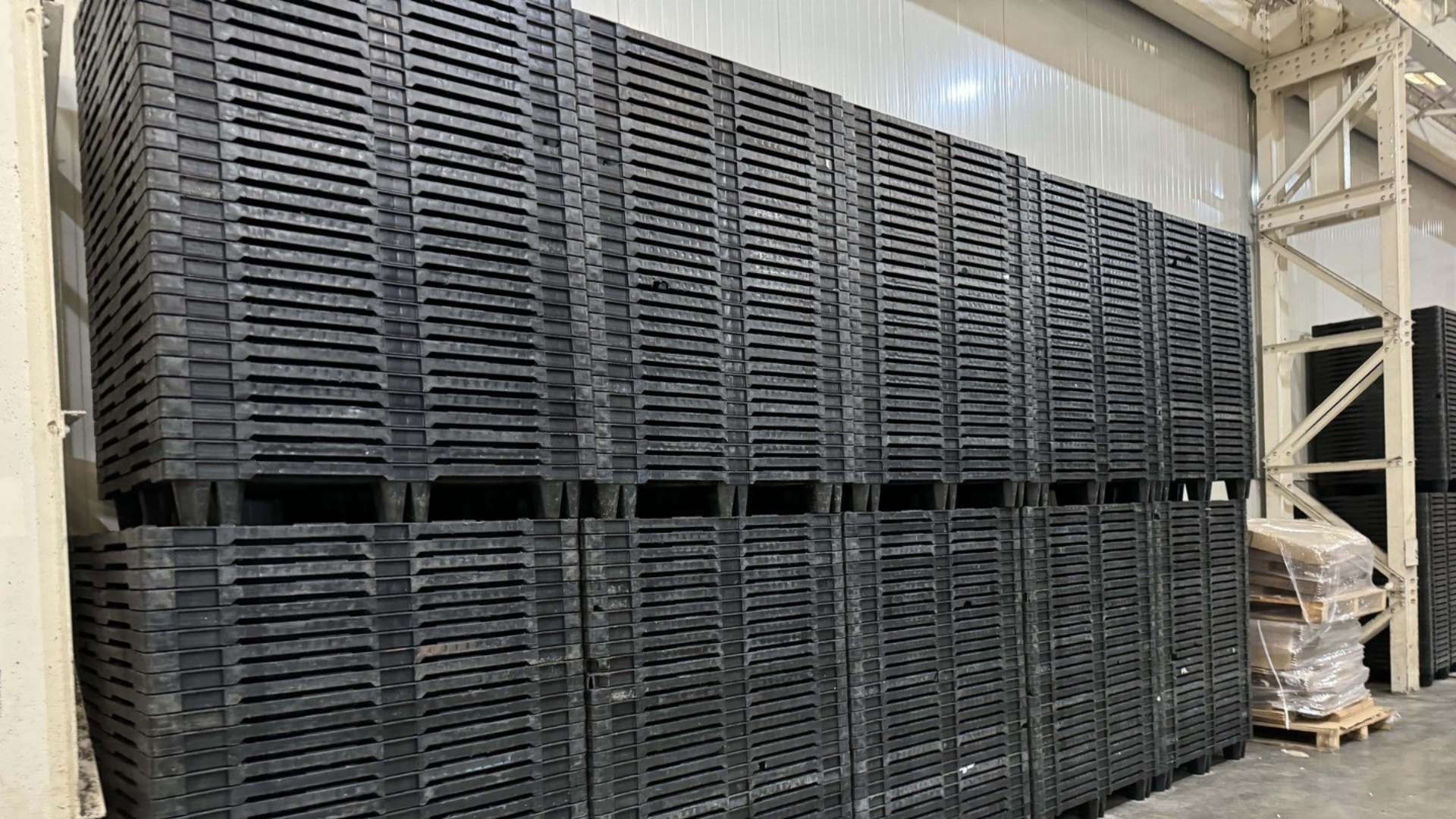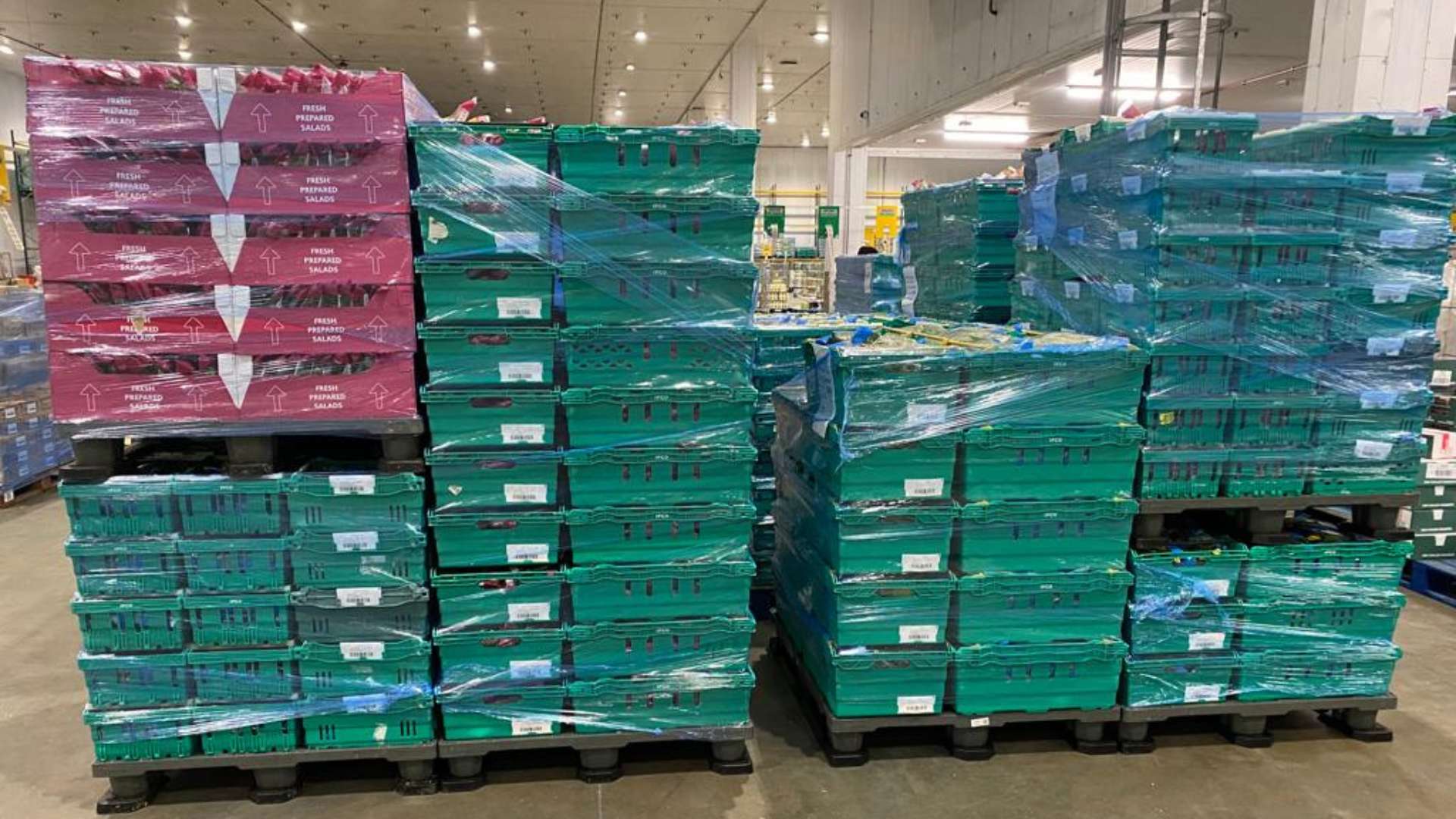These days, businesses are cutting costs wherever they can.
As companies face tighter budgets and seek to make well-informed purchasing decisions, understanding the full cost of asset ownership is more critical than ever.
We know many upfront purchases, whether they be for products or services, come with subsequent costs, such as admin, shipping or maintenance. However, there are often hidden expenses which go under the radar that could affect the overall cost of your purchase considerably over time.
Here, we explore the total cost of ownership for pallets and share what you can do to alleviate these costs and reap the benefits of trackable plastic pallets.
What is the Total Cost of Ownership (TCO)?
Total Cost of Ownership (TCO) considers all the financial aspects associated with a product or service, including and beyond the original purchase price.
While many costs linked to pallets are visible, TCO also includes additional costs which may be hidden or overlooked, such as repair, energy consumption, storage and transport costs.
TCO factors in the real financial impact of your pallets over their lifespan, allowing you to make informed purchases and plan for these costs in advance.
The obvious costs
When you buy pallets, some costs are inevitable, such as:
- Initial purchase – the upfront cost of purchasing
- Admin – cleaning, sorting, handling, tracking software and regulatory compliance
- Shipping – transportation to and from suppliers, distribution centres and customer locations
- Automation downtime – packaging automation can fail when poor-quality pallets stop machines from working at their best
- Disposal/recycling – transportation to these facilities at the end of the life cycle
- Loss – due to theft, misuse or human error

The hidden costs
Considering your TCO will also highlight a number of ‘hidden’ costs that you may not factor in when making your initial purchase.
These could include:
- Storage – the cost to store pallets within warehouses or storage facilities, including rent and maintenance
- Durability – while some pallets are more affordable upfront than others, longer-lasting pallets will often initially cost you more, yet save you money down the line
- Breakage and damage – due to misuse, poor storage conditions or a lack of inspection and maintenance
- Inspection – there are costs for transporting and removing broken pallets when customers pull them out before they go to automation
- Maintenance – the cost of tools, labour and materials needed for repairs to ensure that the pallets remain safe and usable
- Internal forklift movements – the size and shape of wooden pallets make it difficult to transport a significant number in one journey from the yard to the packing area (this can be improved with nestable plastic pallets)

Reducing the Total Cost of Pallet Ownership
While many of the costs associated with pallet ownership are inevitable, there are some which you can take steps to minimise:
Find the right type of pallet
The pallet you choose plays a critical role in determining your TCO. With various pallet options available, choosing the right one not only impacts your immediate costs but can also lead to long-term savings. The right pallet can enhance the efficiency of your supply chain, improve sustainability and boost operational performance.
When it comes to wooden vs plastic pallets, plastic offers a significant reduction in TCO thanks to its durability, lower maintenance needs and longer lifespan.
The breakage rate of traditional wooden pallets is 25%.
For plastic pallets, it falls to just 1%.
Digipal Plastic Pallets save you transport costs, with their nestable feature allowing for 910 on average per truckload, compared to 540 wooden ones, making storage and transportation simpler.
Let’s break down the costs of wooden pallets and Digipal Plastic Pallets:
Wooden pallets
- Purchase price: Lower
- Average lifespan: 1 – 1.5 years
Digipal Plastic Pallets
- Purchase price: Higher
- Average lifespan: 4 – 5 years
Despite the upfront cost, Digipal Plastic Pallets provide cost savings over time due to their superior durability, robustness and shape.
Build a partnership with a pallet supplier
The Total Cost of Ownership doesn’t just rely on the pallets themselves – it is also affected by how you are obtaining them.
At Digipal, our range of plastic pallets is stronger, lighter, more cost-effective and more eco-friendly than its wooden counterparts.
Purchasing your pallets gives you full control, making it a suitable choice for companies with consistent and high-volume pallet needs. But if you’re keen to just access what you need when you need it…

Consider Pallet Pooling or Pallet Renting
At Digipal, our three ownership options allow you to benefit from our plastic pallets your own way.
Pallet Pooling
Our Pallet Pooling service operates as a controlled loop cycle. One day, pallets could be used to transport fruit, then to deliver clothes to a fashion retail outlet the following day.
You can reduce your storage requirements for empty pallets as they will be regularly collected and redistributed. This allows you to ensure you have a consistent supply without acquiring new ones, saving you the storage costs associated with permanent stock.
When purchasing, you need to invest in pallets to meet their peak needs but, with pooling, you can amend your orders based on demand.
Although plastic pallets are often more expensive to buy than wooden ones, their TCO is in fact cheaper on a pooling model.
Pallet Renting
This service is an environmentally friendly and cost-effective choice.
Pallet Renting allows you to maintain optimal pallet quantities without the challenges and costs of ownership.
Pallets are available on short- or long-term hire, helping you relieve the CapEx pressure of ownership and meaning you only ever pay for what you need.
Leverage asset tracking technology
Tracking helps mitigate many of the unexpected costs associated with pallets by giving you total visibility throughout your supply chain, helping you optimise inventory management and improve logistics by tracking assets in real-time.
Asset tracking helps you:
Minimise product
loss & damage
Plan more
efficiently
Gain greater
visibility
We offer a comprehensive suite of tracking options, tailored to meet your specific needs. Our technology can track a wide range of items, from pallets to roll cages, dolav boxes and even vehicles.
Our team can help you choose the right tracking solution and achieve end-to-end visibility across your supply chain.
For more advice on how to implement asset tracking within your business, read this article.
If you have any questions, get in touch.